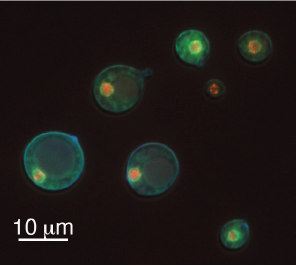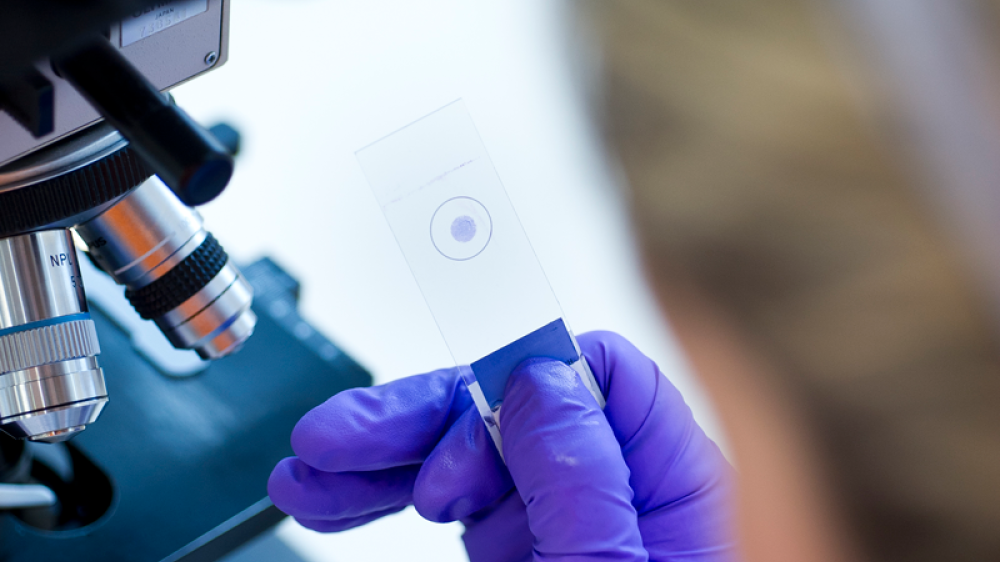Fungal pathogen titanisation
Dr Elizabeth Ballou was awarded funding to validate an in vitro titanisation assay for Cryptococcus neoformans to build confidence in its utility to replace animal studies.
Cryptococcosis is a life-threatening infection caused by Cryptococcus neoformans, a fungal pathogen that causes approximately one million infections per year worldwide. Breakthrough infections resulting in disease relapse are common, which often coincide with resistance to the antifungal typically used long-term to treat infections. Unlike most pathogens, fungal pathogens, including C. neoformans, have multiple mechanisms of acquiring drug resistance including in response to drug or stress exposure. C. neoformans undergo a morphogenetic transition in the host lung to form a subpopulation of so-called Titan cells, large cells with multiple chromosome copies (up to 128 times normal). The presence of Titan cells in infection is predictive of poor patient outcome but the mechanisms for how titanisation leads to antifungal resistance are not well understood.
Titan cells are transient and have only been observed in the lungs and central nervous system. The gold standard model for research involves infecting anaesthetised mice via inhalation of the fungus. After infection, C. neoformans can translocate to the brain resulting in neurological symptoms and meningitis. A screening experiment analysing the effect of specific genes on titanisation can require ten mice per fungal mutant studied. Cells and fluids from the lungs are obtained at the end of the study by bronchoalveolar lavage in terminally anaesthetised mice.
3Rs benefits
Elizabeth and colleagues have previously developed an in vitro method to induce titanisation, published in PLoS Pathogens in 2018. Previously, titanisation had only been observed in vivo generating a heterogeneous population of cells of varying sizes. Liz was awarded a PhD Studentship to focus on building confidence in the in vitro titanisation assay and demonstrating the utility of the assay in studies of fungal morphology.
Hanna Zafar, the PhD student, worked to develop tools for studying the molecular mechanisms of titanisation in vitro. These methods have also been used by their collaborators in the Kozubowski laboratory at Clemson University in the United States and published in Virulence in 2020. The publication examined various fungal pathogens to determine whether titanisation occurs in species other than C. neoformans and C. gattii. Hanna has also worked to develop a high throughput screening method, which she has used to screen of over 4,400 deletion mutants to determine the key factors in titanisation and has applied lessons learned from this screen to a complementary drug screen for inhibitors of titanisation. Screening in mice would have required over 1,200 animals to produce the same data. Hanna is now working to validate the screen results and use this data to test hypotheses underpinning Cryptococcus pathogenesis.

Scientific and technological benefits
Titan cells are thought to have a role in drug resistance. There is evidence that in titan-inducing conditions C. neoformans cells can change size and morphology without producing the classical titan cells. The in vitro titanisation assay produces a heterogeneous population of cells, similarly to that seen in vivo, and the data supporting this has been uploaded in a preprint publication in Biorxiv. The impact of in vitro titan inducing conditions were tested on four clinical isolates, two classified as having a titanising phenotype and two that are non-titanising. The Ballou laboratory identified a new small cell, termed a titanide, that possesses similar morphological features to titan cells including thick cell walls and an abnormal number of chromosomes. Titanides were present in all the clinical isolates tested regardless of titanising phenotype, which may have implications for drug resistant infections.
Added value
Hanna presented the in vitro assay at the British Society of Medical Mycology meeting. She has also collaborated with Liz and other members of the laboratory to produce a video for the public as part of Fungal Disease Awareness Week to explain the impact of fungal pathogens including C. neoformans. Hanna is collaborating with research groups to enable automation of the high throughput screens and validate the screen results she has generated. In 2019, Liz was awarded the British Mycology Society Berkeley Award, which recognises early career scientists who have made outstanding contributions to mycology. She has been awarded a Henry Dale Fellowship to apply the new technology to understanding how Cryptococcus integrates environmental cues to make the switch to titan phase growth. A better understanding of the molecular mechanisms of this process will help direct future research toward improved antifungal therapy and improved patient outcomes.
Further details of this PhD Studentship including application abstract and publications.

